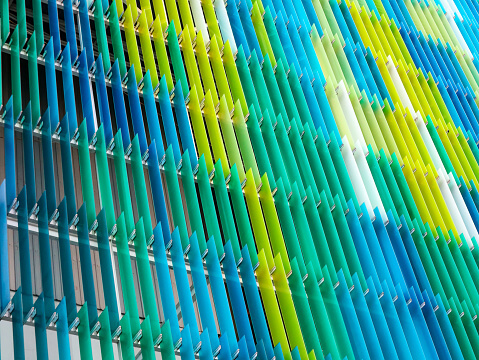Acrylic is one of the most versatile and commonly used materials in modern manufacturing. It goes under a lot of names, including PMMA, plexiglass, Optix, Perspex, and Acrylic Glass. It’s most commonly used in its sheet form, but it can be easily formed into a variety of shapes, like tubes and rods. While acrylic is usually transparent, it is available in a wide range of colors and tints.
There’s a lot of reasons behind the ubiquity of acrylic – and it is a truly amazing material that plays a major part in modern life. Let’s go over 30 acrylic facts that reinforce how influential this material is.

Historical Facts About Acrylic
- Acrylic acid – the original precursor to acrylic plastic – was first created in 1843. At this point, its utility was not fully understood.
- In 1865, scientists discovered how to derive methacrylic acid from acrylic acid. This was combined with methanol to create methyl methacrylate.
- In 1877, German chemists Fittig and Paul discovered the polymerization process that turned methyl methacrylate into polymethyl methacrylate (PMMA). This is the form of acrylic plastic that we use today.
- In 1933, the Roehm and Haas company began commercially producing acrylic plastic. They named their product “Acrylite.”
Facts About the Physical Properties of Acrylic
- There are two primary types of acrylic: Cast and extruded.
- Acrylic has a 92 percent light transmittance rate – one of the highest light transmission rates possible. This makes acrylic clearer than a standard sheet of glass.
- Acrylic is very lightweight, and is approximately half the weight of a similar glass panel.
- Acrylic is 6 to 17 times more impact resistant than a similar-sized sheet of glass.
- It is difficult to shatter acrylic, and it is more likely to crack under immense impact or pressure.
- Acrylic has a tensile strength of 9,400 PSI, and a flexural strength of 13,000 PSI.
- Acrylic has no bisphenol-A, meaning that it is inherently BPA-free.
- Compared to other clear plastics near its price point, acrylic is rather scratch-resistant.
[wbcr_snippet id=”641″]
Acrylic Manufacturing and Processing Facts
- Acrylic is produced by causing a reaction between methyl methacrylate with a catalyst. This is called polymerization.
- Acrylic is easily machinable, and options like laser cutting are available for creating intricate shapes.
- Acrylic is a thermoplastic, meaning that it can be reheated into a liquid form after its initial production.
- As a thermoplastic, acrylic is thermoformable. Extruded acrylic sheets are thermoformable and 150C (302F) and cast acrylic sheets are thermoformable at 160C (320F).
- Purpose-manufactured acrylic is often shaped using a process called injection molding. Injection molding heats tiny acrylic pellets into a liquid, then inserts the liquid into a mold. When the acrylic cools, it hardens into its solid form.
- Before acrylic is sold to consumers, it is usually finished through an industrial sanding and polishing process to ensure maximum optical clarity.
- It is simple to integrate additives or coatings during the acrylic manufacturing process to provide benefits like UV protection, or glare reduction.
- A matte finish can be applied to acrylic which creates an appearance similar to frosted glass.
Acrylic Care & Maintenance Facts
- Acrylic is simple to clean and polish using a clean cloth and cleaning compounds.
- It’s possible to remove light scratches from acrylic with special abrasive compounds.
- Standard glue does not work on acrylic. To glue acrylic, it’s necessary to use heat or special chemical solvents.
- With some basic guidance, it is very easy to drill or cut acrylic plastic with standard woodworking tools.
Interesting Uses for Acrylic
- Acrylic is one of the most versatile plastics available, with various home use and commercial use cases.
- Acrylic can be made into a lacquer, which is often used as a protective coating for outdoor decks and furniture.
- Acrylic is an emerging 3D printing material, with black, white, and transparent filament being commonplace.
- Acrylic sheets are often used for aquariums since they are lightweight, inexpensive, and shatter-resistant.
- Exterior retail signage is often made from acrylic.
- Acrylic was historically used in submarine periscopes, windows for World War II jets, and as protective canopies and shields for turrets.
Final Thoughts
Acrylic is an amazing material with many incredible properties. It’s no surprise that it’s one of the most commonly used plastics in the modern world! If you’d like to use acrylic in your next project, browse our wide selection of acrylic plastic. Or, if you have questions about uses for acrylic plastic, contact us today.

